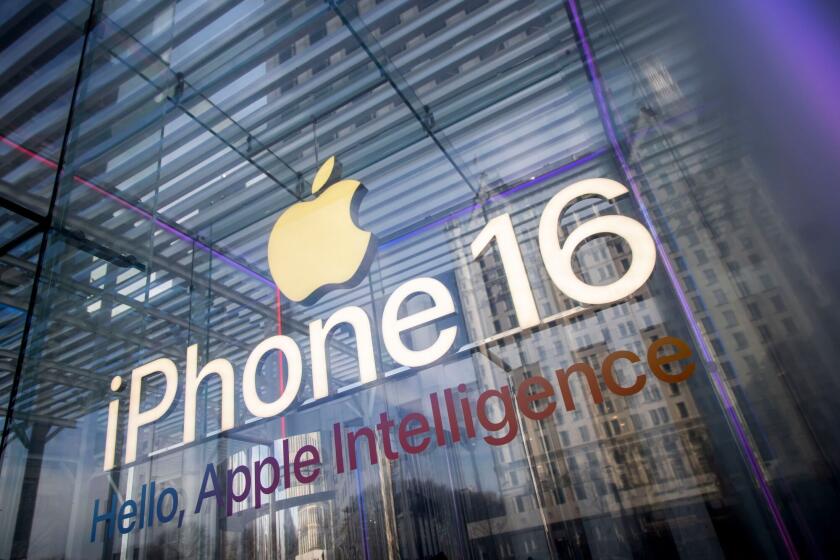Desperately Seeking Celebrity
- Share via
AMAGANSETT, N.Y. — The recent sight of 77-year-old John J. Rigas, the former Adelphia Communications CEO, being led away in handcuffs by federal authorities was clearly intended by the Bush administration to reinforce its view of the epidemic of corporate malfeasance. Rigas is allegedly one of the “bad apples” spoiling the whole business barrel. His greed undermined his company and U.S. capitalism itself. If he is convicted and incarcerated, confidence will be restored.
Greed certainly exists in the corporate world, and there have been plenty of instances of it recently. But the emphasis on greed, which serves the purposes of politicians and corporate America, raises one big question: Why now? Presumably, people have always been greedy, so why haven’t executives always binged at their stockholders’ and employees’ expense?
Federal Reserve Chairman Alan Greenspan, in his testimony before Congress last month, answered that while greed is a human constant and executives are no more greedy in the 21st century than before, there are now more opportunities to indulge it. He is not altogether wrong. Excessive stock options and corporate accounting practices practically encourage executives to raid their companies’ coffers, though that too raises a big question. Why was the system re-rigged to provide these opportunities for executive self-enrichment and why hadn’t anyone thought of it before?
There is yet another problem with the greed analysis. It doesn’t really explain the scale of the financial diversions. Former Enron CEO Kenneth L. Lay took $81.5 million in loan advances from the company; former Tyco chief executive L. Dennis Kozlowski reportedly received $135 million in forgiven loans and company payments for real estate, charitable donations and personal expenses; former WorldCom CEO Bernard J. Ebbers an estimated $408 million in loans from his company; and Rigas and his three sons $2.3 billion in off-balance-sheet loans from their company that they used, among other things, to build themselves a $13-million, 18-hole golf course. Even allowing for inflation, this would be robbery on a colossal and unprecedented scale. No one needs 18 homes and properties owned by Lay or a personal golf course or a $6,000 shower curtain that Kozlowski had installed in his New York apartment. Greed may be greed, but this kind of acquisitiveness seems to go beyond mere greed.
There is a far less-comforting explanation: All these shenanigans have less to do with greed than with what the social theorist Thorstein Veblen called “conspicuous consumption.” In this analysis, the alleged corporate plunderers were raking in their hundreds of millions of dollars not primarily to provide themselves with security or ease or even extravagance, but to support a grand display of wealth that would impress investors, the media and other business executives and demonstrate that they belonged. This wasn’t greed. This was showmanship. They wanted to be Masters of the Universe.
In a sense, even though the “bad apples” were victimizers, they were also victims of a new business mentality and a new set of corporate priorities. Traditionally, America’s CEOs were like the Bushes: pallid, Ivy League-educated men in club ties, pinstriped Brooks Brothers suits and wingtip shoes. Like their wardrobe, they conveyed a conservative sense of decorum and propriety that dictated they not be seen or heard and that they not court the media.
These mandarins certainly had their wealth, and it was large. They had their clubs, their mansions, their summer homes, their yachts and their circle of similarly well-heeled and influential friends, but these men knew their paramount place in the social cosmos, and so did everyone else. Their possessions were the perquisites of success, not an attempt to certify it.
As far as their relationships to their companies were concerned, these men served their businesses and were compensated accordingly. And so it would continue until they retired to the status of emeritus. To the extent they were symbols of their companies, they signified stability and soundness. They were solid men who wouldn’t countenance corporate hanky-panky and didn’t need to indulge in it themselves because they had both the money and the status that were automatically conferred by the governance of big business, not to mention by birth.
These sorts of chieftains are still found in U.S. business, but there are fewer of them. The U.S. economy has shifted from being largely industrial to one that is service-oriented and technological. To survive, major companies must be light-footed and sensitive to innovation, which puts a premium on fast-thinking, fast-moving business buccaneers. At the same time, the economic emphasis has shifted from stability, which favored old-fashioned plutocrats, to growth, which favors young Turks eager to acquire, merge and consolidate.
As a result of these changes and of changes in U.S. demographics generally, the new corporate world is not as insular as it once was, when the baton of management was passed from one blueblood to the next, from one generation to the next, and everyone was a member of the same WASP club. Rigas, the son of Greek immigrants, served in the infantry in World War II, then attended Rensselaer Polytechnic Institute, not the Harvard Business School, before parlaying a small investment in a movie theater into a cable television empire. Ebbers was a two-time college dropout who worked as a milkman and a bouncer before entering the business world. Kozlowski, the son of a police detective, worked his way through Seton Hall University waiting tables and playing guitar in a wedding band. Even Lay, the aristocrat of this bunch, earned his degree at the University of Missouri and a doctorate from the University of Houston before entering the Navy.
These weren’t nobles, secure in their positions and their caste. These were ambitious young men from the ranks of the middle class who had to prove their worth both within their companies and outside them--companies that were themselves newcomers trying to muscle their way into the corporate landscape.
The most obvious way to do so was by engineering spectacular growth, which was what investors demanded, and all these men did just that. But by the 1980s, there was another, complementary option. They could earn investor confidence by flaunting their personal fortunes and then impute that display to the company. Virtually no one in the 1950s, ‘60s or ‘70s knew who the chiefs of industry were, much less how well they lived or how much money they made. In truth, no one cared to know, and the mandarins didn’t need anyone to know. They knew how much they had.
But in the 1980s, a new virus of celebrity infected the country, one feature of which was the “celebritization” of wealth. In a society where celebrity was suddenly considered the most exalted state one could achieve, the rich discovered that a large fortune and an extravagant lifestyle would bring media attention--witness that TV paragon of 1980s overindulgence, “Lifestyles of the Rich and Famous.” Now that celebrity had become a source of power, previously obscure titans of industry, from Lee Iacocca to Donald Trump, began bidding for stardom, too. In fact, the business world practically demanded it.
This chase for recognition was the personal equivalent to botox economics--the idea that a corporate balance sheet must look good rather than actually be good. In effect, CEOs needed that money, however they got it, or they would be marginalized. Corporate executives who displayed their wealth and lived grandly would get the magazine covers (and not just of the business magazines), the television profiles, the constant mentions on CNBC, the bestsellers advising other executives how to do it, the invitations to the corporate conclaves at which one rubbed shoulders with the other superstars of business and a place high on the list of the movers and shakers of America.
Moreover, this sort of stardom had economic value for the executives’ companies. It made Rigas, Lay, Ebbers and the others players at the big corporate table and gave Enron, WorldCom, Adelphia et al. much greater visibility, though it also changed the traditional relationship between CEOs and their companies. Not so long ago executives served their companies. Now the companies served the executives. Or as Kozlowski was fond of saying, “Money is the only way to keep score.”
This matters because it locates corporate corruption not in the rotten soul of some overzealous CEO but deep in the soul of modern American culture. That makes it much more difficult to extirpate. You can use the stick of criminal prosecution to bring offenders to justice, but it is likely to be of limited effectiveness when the business world itself, like the rest of society, continues to hold out the carrot of stardom. As much as Americans want corporate responsibility to reassert itself, to do so the country may need to change its own set of priorities that just a few months before their indictments had the media singing the praises of Kozlowski and Rigas.
More to Read
Inside the business of entertainment
The Wide Shot brings you news, analysis and insights on everything from streaming wars to production — and what it all means for the future.
You may occasionally receive promotional content from the Los Angeles Times.










